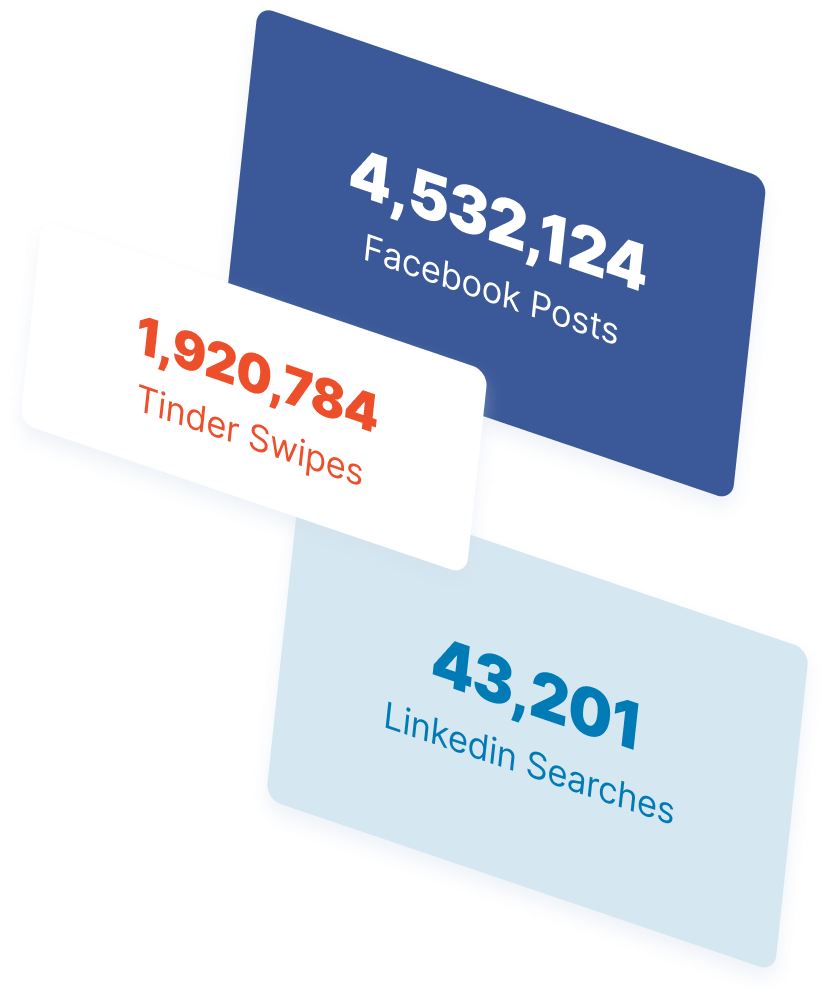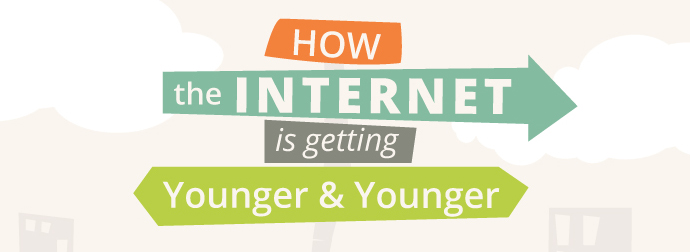-
 3 min. read
3 min. read
-
 WebFX Team
WebFX Team Digital Marketing Agency
Digital Marketing Agency
- The WebFX team is made up of more than 450 subject matter experts in digital marketing, SEO, web design and web development, social media, and more. Together, they’ve helped WebFX’s clients earn more than $3 billion in revenue from the web — and that’s just in the past five years. @webfx
Even as smartphone and tablet usage rates continue to rise, with 91% of adults in the US now owning a cell phone, the “age” of the internet just keeps getting younger. Children now begin consuming social media at an average age of only eight, and teens are now spending approximately five hours per day online. As the World Wide Web celebrates its 25th anniversary, we’re taking a look at how usage has changed over the years, and how teenagers — many who have never known a world without internet — are adjusting their online habits and behaviors.
Check out the infographic to learn more!
As the Internet becomes more ubiquitous in our world, younger generations are changing the way that the masses interact with and use the web. This infographic visualizes how the web has grown over time and the impact teenagers have had.
Share This Graphic On Your Site
 Share This Graphic On Your Site For many of us at WebFX, we grew up at the same time as the Internet.
Share This Graphic On Your Site For many of us at WebFX, we grew up at the same time as the Internet.
We remember our parents plugging phone lines into the back of our 28.8k (or 56k, if we were lucky) modems, and the awful noises those modems made as they connected to the vast, albeit very slow, world of the internet. There were probably a few fights among siblings over who got online next, and a few accidental disconnections when someone picked up the phone. We fondly remember the first time we used DSL or cable, and how much faster it seemed.
We remember our first cell phones, and how strange it was to be able to access the internet wirelessly, to do things on the go, and to communicate with text messages. Things have definitely changed since the early days of the Internet. Although it’s a way of life for us now — we are an internet marketing company, after all!
— it’s strange to look back and see how far we’ve come. Since 2000, when the internet was beginning to see in-home adoption rates of 40%, usage has risen dramatically and in unexpected ways. Children and teenagers now need the internet for homework and research, whereas many of us spent our elementary school days with our noses in library books!
Even as smartphone and tablet usage rates continue to rise, with 91% of adults in the US now owning a cell phone, the “age” of the internet just keeps getting younger. Children now begin consuming social media at an average age of only eight, and teens are now spending approximately five hours per day online. As the World Wide Web celebrates its 25th anniversary, this infographic gives us a closer look at how usage has changed over the years, and how teenagers — many who have never known a world without internet — are adjusting their online habits and behaviors.
-
 The WebFX team is made up of more than 450 subject matter experts in digital marketing, SEO, web design and web development, social media, and more. Together, they’ve helped WebFX’s clients earn more than $3 billion in revenue from the web — and that’s just in the past five years.@webfx
The WebFX team is made up of more than 450 subject matter experts in digital marketing, SEO, web design and web development, social media, and more. Together, they’ve helped WebFX’s clients earn more than $3 billion in revenue from the web — and that’s just in the past five years.@webfx -

WebFX is a full-service marketing agency with 1,100+ client reviews and a 4.9-star rating on Clutch! Find out how our expert team and revenue-accelerating tech can drive results for you! Learn more
The Internet in Real Time
Ever wonder how much is going on at once on the Internet? It can be tough to wrap your mind around it, but we’ve put together a nice visual that’ll help! The numbers show no sign of slowing down either.
Find out More

Ready to Drive Results for Your Business?
See how WebFX uses SEO, PPC, Social Media, and Web Design to Drive Revenue for Businesses.
Get InspiredThe Internet in Real Time
Ever wonder how much is going on at once on the Internet? It can be tough to wrap your mind around it, but we’ve put together a nice visual that’ll help! The numbers show no sign of slowing down either.
Find out More





